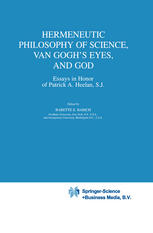

Most ebook files are in PDF format, so you can easily read them using various software such as Foxit Reader or directly on the Google Chrome browser.
Some ebook files are released by publishers in other formats such as .awz, .mobi, .epub, .fb2, etc. You may need to install specific software to read these formats on mobile/PC, such as Calibre.
Please read the tutorial at this link: https://ebookbell.com/faq
We offer FREE conversion to the popular formats you request; however, this may take some time. Therefore, right after payment, please email us, and we will try to provide the service as quickly as possible.
For some exceptional file formats or broken links (if any), please refrain from opening any disputes. Instead, email us first, and we will try to assist within a maximum of 6 hours.
EbookBell Team

4.3
38 reviewsperceptual essences that can be rendered directly manifest in perception with the help of theoretically structured instruments serving as 'readable technologies'. " Scientific knowledge should thus be understood as an extension of "unassisted" perception. A perceptual fact has an outer horizon "which separates it from the ground on which it appears," and an inner horizon "composed of a multiplicity of possible perceptual profiles organized by an invariant essence. " The perceiving subject can "bring forth a representative sample of the profiles in question," occasionally by making use of certain technological processes, which are themselves subject to interpretation in terms of theoretical representations. The theoretical entities described in these representations are not "simply detected thanks to an inferential operation, but rather, they are directly perceived. " It follows from this that the correspondence between the "manifest image" and the "scientific image" is not done one-to-one, but by a "many-to-one or one-to many application between contextually defined perceptual objects within contexts that are mutually incompatible but complementary. " This should not, however, be understood as a form of conventionalism, nor as a form of "cultural relativism. " Pre comprehension, which guides interpretation imposes strict limits to the descriptive categories which can be used and to the manner in which they can be linked to appropriate empirical objects. The author applies his hermeneutic principles to the study of visual perception. (In fact this question is treated in the first part of the book.